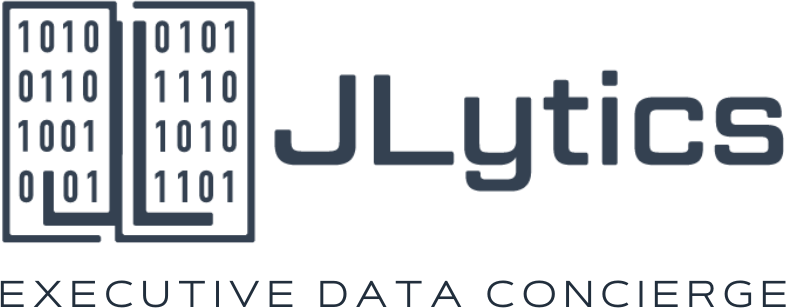As enterprises increasingly integrate large language models (LLMs) into their operations, the issue of transparency has emerged as a critical concern. Organizations deploying these powerful AI systems face significant challenges in understanding, controlling, and explaining the technologies they’re adopting. This article explores four key perspectives on the transparency challenges posed by enterprise LLMs.
1. The Black Box Syndrome: Unraveling the Opacity of Closed-Source AI
The fundamental challenge of closed-source LLMs lies in their inherent opacity. Unlike open-source alternatives, proprietary models conceal their architecture, training data, and underlying mechanisms from scrutiny. This opacity creates what experts call the “black box syndrome” – where inputs and outputs are visible, but the processes generating those outputs remain hidden.
For enterprises, this black box presents significant challenges:
- Limited understanding of reasoning processes: Organizations cannot trace how the model arrives at specific recommendations or decisions, making it difficult to validate the logic and appropriateness of its outputs.
- Unknown biases and blindspots: Without visibility into training data and model architecture, enterprises cannot fully identify potential biases or limitations that might impact business-critical processes.
- Dependency on vendor explanations: Companies must rely on AI providers’ explanations and documentation, creating an asymmetric information relationship that limits independent verification.
Some organizations are addressing these challenges through techniques like input/output pattern analysis and creating controlled test suites that probe model behavior across different scenarios. However, these approaches only approximate understanding rather than providing true transparency into the underlying mechanisms.
2. Hidden Risks: Ethical and Operational Challenges in Non-Transparent LLMs
Beyond the technical opacity lies a landscape of hidden risks that enterprises must navigate when deploying non-transparent LLMs:
- Unintended ethical consequences: Without visibility into how models make decisions, organizations may unintentionally perpetuate harmful stereotypes, discriminatory practices, or other ethical issues through their AI systems.
- Operational vulnerabilities: Closed-source models may contain unknown vulnerabilities to prompt injection, data poisoning, or other attack vectors that enterprises cannot independently assess or mitigate.
- Knowledge inheritance uncertainties: Organizations cannot fully determine what information from the training data might surface in model outputs, creating potential IP and privacy risks.
- Limited customization control: The inability to access and modify model internals restricts enterprises’ abilities to align models with specific ethical guidelines or operational requirements.
Forward-thinking organizations are developing robust governance frameworks that include human oversight, comprehensive testing regimes, and clear escalation paths when models produce unexpected or concerning outputs. These frameworks help mitigate, though not eliminate, the hidden risks of non-transparent systems.
3. Compliance and Control: Navigating the Regulatory Landscape of Closed-Source Models
The regulatory environment for AI is rapidly evolving, with frameworks like the EU AI Act, NIST AI Risk Management Framework, and industry-specific regulations creating new compliance requirements. For enterprises deploying closed-source LLMs, this regulatory landscape presents unique challenges:
- Documentation requirements: Many emerging regulations require detailed documentation of AI systems, including information about training data and model behavior that may not be available for closed-source systems.
- Right to explanation: Financial, healthcare, and other regulated industries often require explainable decision-making, which becomes problematic when key aspects of the model remain hidden.
- Audit limitations: External auditors face significant hurdles when attempting to verify compliance of systems whose inner workings remain proprietary.
- Liability questions: The opacity of closed-source models complicates questions of liability when errors occur – is it the enterprise, the model provider, or both who bear responsibility?
Organizations are addressing these challenges through contractual provisions with AI providers, implementing supplementary documentation processes, and developing internal controls that compensate for the limitations in model transparency. Some are also engaging proactively with regulators to develop workable compliance frameworks for closed-source AI systems.
4. Performance Uncertainty: The Enterprise Dilemma of Invisible AI Decision-Making
Perhaps the most immediate challenge for enterprises is managing performance uncertainty in closed-source LLMs:
- Inconsistent or unpredictable outputs: Without understanding the model’s internal mechanisms, organizations struggle to predict when and why performance might vary across similar inputs.
- Limited optimization capabilities: The inability to access and fine-tune model internals restricts enterprises’ ability to optimize performance for specific use cases.
- Difficult root cause analysis: When models produce incorrect or harmful outputs, the opacity of closed-source systems makes it challenging to identify the root cause and implement targeted fixes.
- Uncertain improvement trajectories: Organizations cannot independently assess whether model updates from providers will address their specific performance concerns.
Leading enterprises are developing sophisticated evaluation frameworks that continuously monitor model outputs against defined metrics and benchmarks. These frameworks help identify performance drift and provide early warning of potential issues, even if they cannot fully compensate for the lack of transparency into the underlying model.
The Path Forward: Balancing Innovation and Transparency
As enterprises navigate these challenges, a balanced approach is emerging:
- Tiered transparency requirements: Organizations are defining different transparency requirements based on the criticality and risk of specific AI applications.
- Hybrid approaches: Some enterprises are combining closed and open-source models, using more transparent systems for high-risk applications while leveraging closed-source capabilities where appropriate.
- Enhanced vendor relationships: Forward-thinking organizations are working closely with AI providers to negotiate greater transparency and customization options.
- Robust governance frameworks: Comprehensive governance structures are being implemented to manage risks associated with limited transparency.
The tension between innovation and transparency in enterprise AI adoption will likely persist, but organizations that proactively address these challenges position themselves to capture the benefits of LLMs while managing their unique risks. As the market matures, we may see new models of collaboration between enterprises and AI providers that strike a more optimal balance between proprietary innovation and necessary transparency.
***
JLytics’ mission is to empower CEOs, founders and business executives to leverage the power of data in their everyday lives so that they can focus on what they do best: lead.



